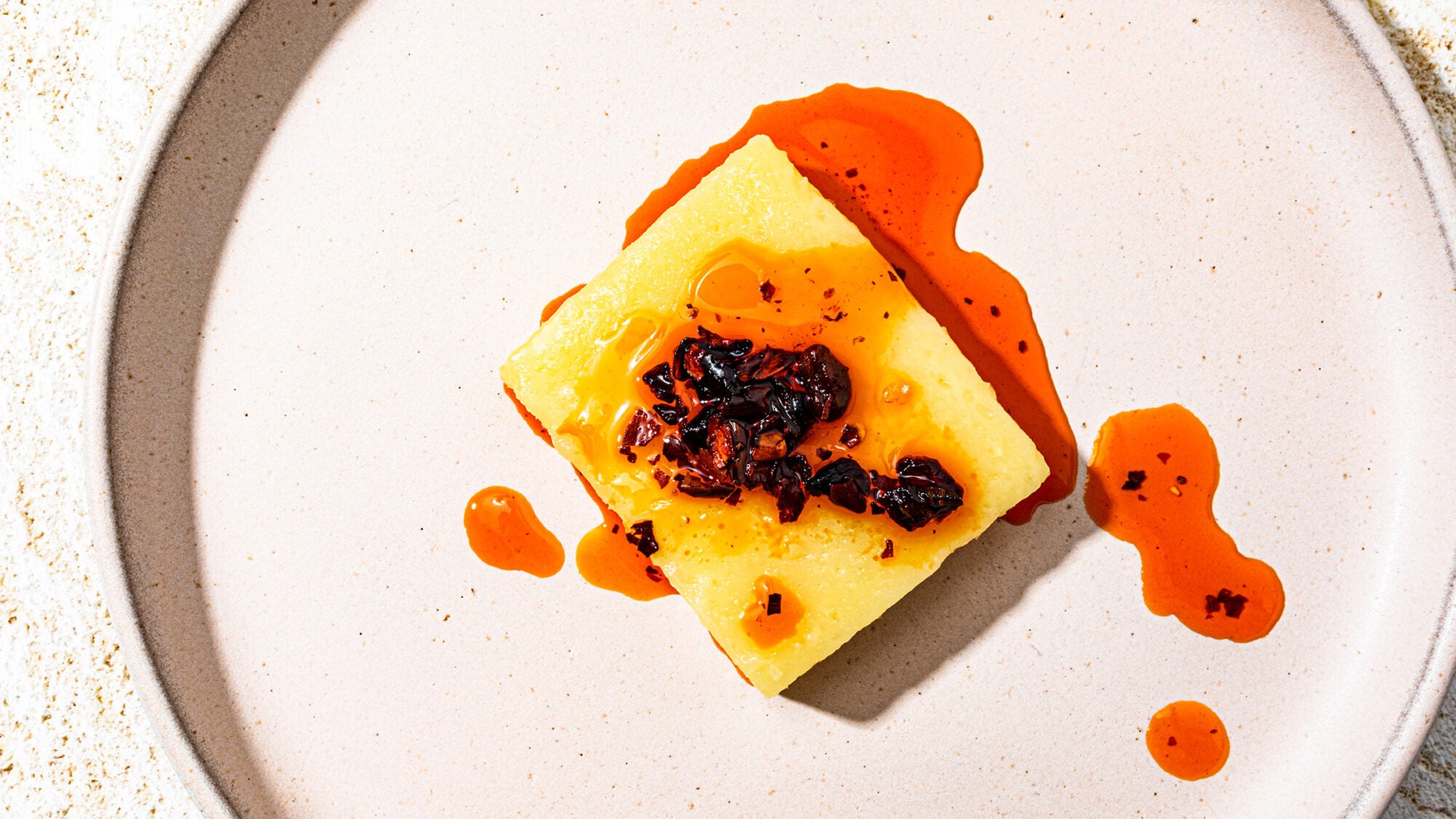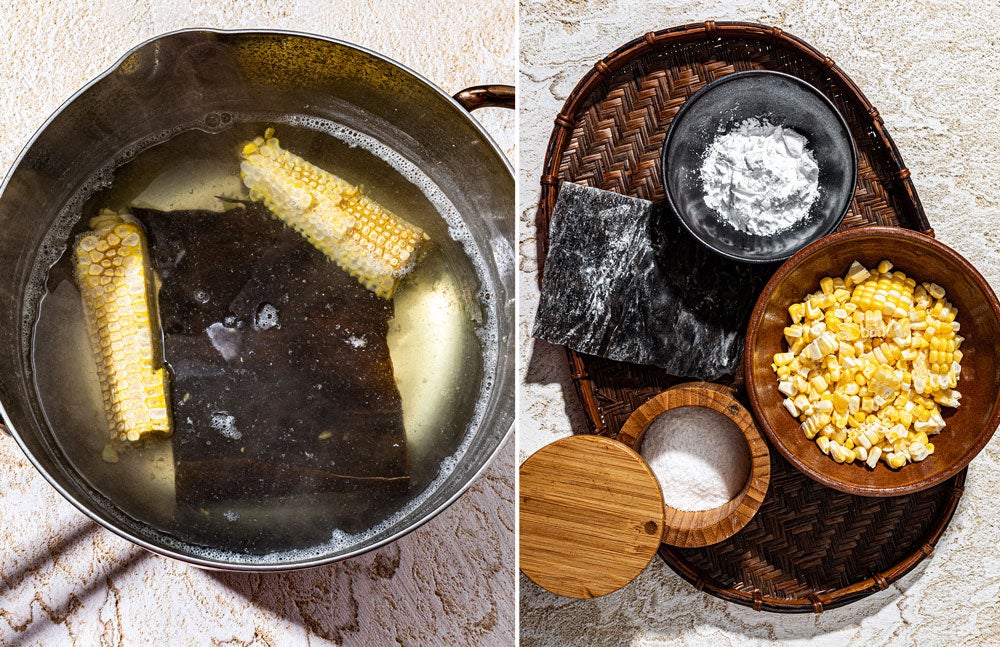
Corn, off the cob and into a world of possibilities.
Growing up in Idaho, my family didn’t overthink corn, but often we overcooked it. That brief few weeks right around when school started always seemed too short a window for considering alternatives to our usual method, which was: shucked cobs plunged into boiling unsalted water for—ten minutes? twenty?—then affixed with corn holders and rolled, while hot, over a sacrificial stick of butter. I relished these fleeting few weeks around Labor Day that marked the turn of the season, even if a soft, mushy texture had come to define the corn that was the centerpiece of those meals.
Since then, many cooks and cookbooks have nudged me in better directions—towards embracing the kernels raw, adding smoky notes by turning the ears over a hot grill, and seizing its summery essence in purees and broths. It’s helped me discover the more nuanced flavors and snappier textures of the vegetable, brought more prominently to the foreground by less intrusive cooking methods. Boiling continues to prevail among many home cooks—the agitation of the water helps dislodge stray strands of corn silk, the long water bath heightens its vibrant yellow hue, and it serves to rinse starchiness from the kernels. But starchy corn is more an issue of age than a defining trait of the vegetable. Sample a few kernels raw before going the boiling route, and judge for yourself if boiling is necessary—and if you do, cap it at three minutes.
When you’re buying sweet corn, resist the urge to peel back the husk to inspect the kernels inside—whether the kernels are white or yellow makes a negligible difference in the flavor. That fresh, pale green husk acts as a natural preserver, and exposing the kernels hastens their drying out and turning starchy. (It’s also bad etiquette—imagine yourself as the farmer here.) Instead, give it a good feel, tracing the husk with your fingers for plump kernels, and inspect the exterior for any indication that worms might be burrowed in there.
Growing up in Idaho, my family didn’t overthink corn, but often we overcooked it
(Of course, I’m talking exclusively about sweet corn here. Big Corn, the commodity crop that covers several other varieties destined for animal feed, processed foods, ethanol, and for the manufacturing of various non-food products, is a separate enterprise. And in fact, while sweetness and juiciness are the prized traits in our seasonal sweet corn, dry, dense starchiness is a trademark of those commercial varieties.)
When lightly cooked, sweet corn has an inherent, unexpected richness thanks to its starch content, which works well with cream, cheese, mayonnaise, and butter. Beyond esquites and elotes, the combination of broiled cheddar, gochujang, and kimchi makes for a sweet, spicy, and tangy dip in the style of Korean corn cheese (found at many Korean barbecue restaurants) with added heat. With a quick five-minute broil in the oven, the kernels stay plump and juicy without a hint of mush. Pair it with whatever edible scooping vessel you’ve got—tortilla chips, rice crackers, toasted bread, or sturdy crudites.
Hang onto those corn cobs, though, as there’s still plenty of flavor left in them—I always strive to capture that flavor by making corn broth. It comes in handy all year long in risotto, ramen broth, or really anything that’ll benefit from a layer of summery flavor, and you can stash them in your freezer. Corn broth can be as simple as cobs covered with water and seasoned to taste with salt, or enhanced with strips of kombu, parmesan rinds, or any range of aromatics—you need only about 20 minutes of simmering to release the flavor. In my adaptation of chef Naoko Takei Moore’s cold corn tofu—where ripe, fresh corn kernels are blitzed with water until smooth, thickened in a donabe over heat with kudzu powder, and poured into a mold to chill—I use a corn-dashi broth as the liquid, and while bright and pure corn flavor sings through, kombu provides additional structure and umami. It’s the creamy, cooling dish that makes a perfect first course for almost any summer or fall meal.

But circling back to the corn of my Idaho youth, there’s still nothing wrong with what my family believed to be the only way to serve corn. I of course opt for grilling over boiling, and plain sweet butter doesn’t disappoint. But a quick compound butter, enhanced by adding fresh or dried herbs, chiles, citrus zest, and even dry or crumbly cheese can change up the experience. This year, I’m particularly enamored with an umami-rich smoked tomato butter that puts your grill (or stovetop smoker) to work. The compound butter compliments the richness of the fat and the sweetness of the corn, and with the two vegetables blooming at the farmers market at the same time, they make a natural pair.
The most important thing about corn, as I’ve come to learn since my family dinners growing up, is that when it is at its seasonal peak, try it raw first. If it’s bursting with flavor that’s sunshine sweet, and its texture is juicy and appealing, there’s really only one way I can screw it up—and that is by overcooking it.